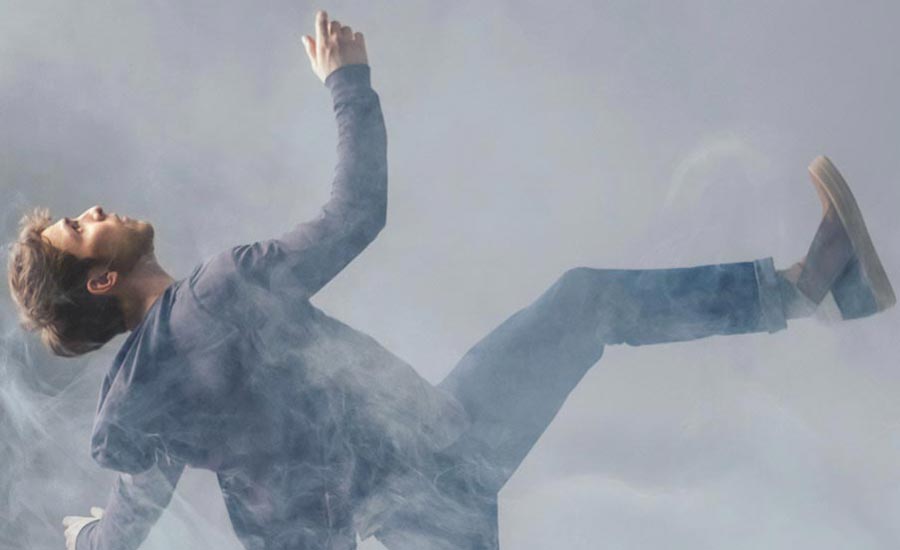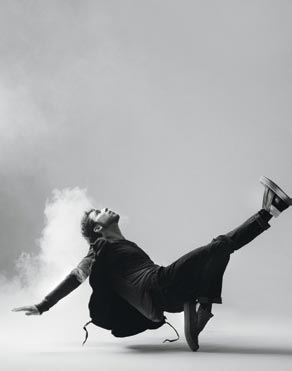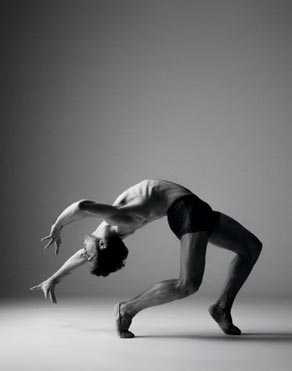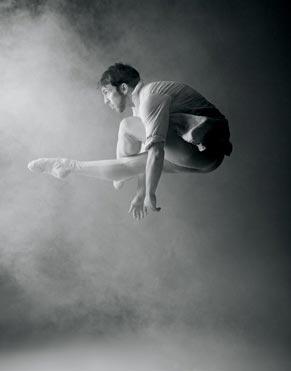
Defying Gravity on the World’s Stages

Dylan Tedaldi ’09 on the artist he is, and the artist he would be.
First soloist for the National Ballet of Canada, Dylan Tedaldi has been dancing since age 6. Early on, he studied jazz, tumbling and hip-hop at a small studio near his home in Boston. Teachers identified his talent, encouraging him to audition for Boston Ballet School, where he studied for many years; he honed his skills through summer courses with the School of American Ballet and San Francisco Ballet School. During Dylan’s Class II year at Milton, he was one of a handful of young dancers in the world invited to compete at the prestigious Prix de Lausanne in Switzerland. There, he particularly excelled in his contemporary solo by Hamburg Ballet director John Neumeier. At Neumeier’s invitation, 17-year-old Dylan spent a year training with the Hamburg Ballet, in a program designed to prepare dancers for professional company life. In 2009, Dylan joined the National Ballet and was promoted to first soloist in 2015.
 His roles with the company include playing Florizel in The Winter’s Tale, and dancing the title role in Le Petit Prince. His repertoire has range, including central roles in Alice’s Adventures in Wonderland, Romeo and Juliet, Nijinsky, The Nutcracker, West Side Story, Swan Lake, Hamlet and Russian Seasons. Dylan earned the Rolex Dancers First Award for his performance in Spectre de la Rose in 2014 and the Patron Award of Merit in 2011.
His roles with the company include playing Florizel in The Winter’s Tale, and dancing the title role in Le Petit Prince. His repertoire has range, including central roles in Alice’s Adventures in Wonderland, Romeo and Juliet, Nijinsky, The Nutcracker, West Side Story, Swan Lake, Hamlet and Russian Seasons. Dylan earned the Rolex Dancers First Award for his performance in Spectre de la Rose in 2014 and the Patron Award of Merit in 2011.
After eight years with the National Ballet, Dylan talks about the challenges, rewards and surprises of being a professional ballet dancer, and his vision ahead.
Why is the work that you do important?
Classical ballet shows people what can be created with dedication to something highly specialized. The performances that we share with people are beautiful to see, and at their best they make people think. Maybe the dedication they require translates for the audience and inspires people to work hard at their own endeavors. For me, working for so long and hard on a single thing, and being able to realize that, is gratifying. Not every single day is gratifying. I’m an artist, but I also work for an organization. I have to do things that are not what I dreamt of doing when I signed up to be a ballet dancer. Reminding myself that this role is the product of a lot of hard work—sticking with something, getting better at it and setting new goals for myself—is important.
 What is most challenging for you?
What is most challenging for you?
Managing the goals I have for myself, alongside what’s expected and required of me by my colleagues and the people who manage the organization, can be hard. As an artist, I want to use my work to grow artistically. But I don’t just work for myself. I’m working alongside other dancers, and my personal artistic priorities are not necessarily theirs. I have to maintain my artistic integrity and be proud of my own work while also satisfying the artists around me. Achieving that balance can be hard, because though I want to prioritize myself, I’ll have more opportunity if I’m satisfying the company and individuals working with me. There’s more stability in working with a larger artistic organization, and that’s important for me, too.
I have to be persistent at valuing my artistic pride, because that priority is not in my job description. I could easily get away with working to satisfy the artists around me, and I’m sure that would lead to a lot of success. But I wouldn’t be proud of the artist I became.
What’s most rewarding?
 I’m most rewarded when I find something new in my performance, and it translates to the people around me. The ultimate success for me is when I’m learning and am proud of what I’m achieving, and that’s confirmed through feedback. In some shows, I’ve performed as I was told and done exactly what was required of me. And that’s led to feedback like, “You really took these corrections. Great show. I could see you were doing what I asked.” In training as a ballet dancer—especially when you’re young—everyone assumes that you’ll do what you’re told, so that you always feel like a student, even when it’s your job.
I’m most rewarded when I find something new in my performance, and it translates to the people around me. The ultimate success for me is when I’m learning and am proud of what I’m achieving, and that’s confirmed through feedback. In some shows, I’ve performed as I was told and done exactly what was required of me. And that’s led to feedback like, “You really took these corrections. Great show. I could see you were doing what I asked.” In training as a ballet dancer—especially when you’re young—everyone assumes that you’ll do what you’re told, so that you always feel like a student, even when it’s your job.
I feel good about satisfying those people, but not necessarily like I’m dancing the way I want. The ultimate winning situation is when I’m able to do what’s asked of me and still stay true to the way I want to perform something.
I’ve also had a couple of rehearsal experiences working with choreographers who allow us to be very personal; their feedback is not so much, “You need to do the steps this way,” but more, “You need to look within yourself and feel this way while you’re doing that step.” When I have taken choreography to that new place, and found something within myself, that’s satisfying. That’s when I’m learning more about myself as an artist.
What has surprised you?
I’m not the dancer I expected to become 10 years ago. I assumed that I would dance the works that I wanted to dance all the time, and I would always be able to grow artistically. I’ve tried to keep pushing myself throughout my career, but a lot of the growth I’ve experienced has been unexpected. That’s surprising in a great way. It leaves room for me to try to achieve some of the goals I had set for myself when I was younger. You shouldn’t limit yourself with expectations, but it’s always good to have goals.
I’ve danced a lot of works that are not the ones I love watching, but it’s all helped me grow, because I’ve been pushed to find something satisfying in each one of those works. That way, when we do works I’m really invested in, I grow that much more, because I’m coming at it from a different—more appreciative—perspective.
What is your relationship with the audience?
When I speak to our audience members, their commentary often falls in line with my feelings about a piece. But sometimes I have a totally different opinion, and I wonder whether the people who should have seen a piece are even in the room. In my art form, you do what you’re told and don’t complain. That’s great discipline. But when I watch a performance myself, the elements I admire most are the windows into each of the individual dancers.
When I listen to my own direction and am proud of the art that I created, the audience members whose opinions I value often enjoy the piece most. The people you admire will respect your being true to yourself. Figuring out what kind of artist you are and not deviating from that for the wrong reasons is important.
 What kind of dancer do you want to be?
What kind of dancer do you want to be?
Within the dance world my position is very hierarchical. We have principal dancers and soloists. All ballet dancers in a large, classical company set goals for themselves: Most want to rise through the ranks and become a principal dancer. Initially, I wanted to be that kind of dancer—to have lots of large, fancy roles under my belt, to have my name mean something in the ballet world.
But the people who become principal dancers are very specific dancers with a look well suited to these fairy tale stories. Many dancers I admire are very technical, wonderful movers. But it’s not fair to me to set a goal that has nothing to do with who I am as an artist. I want to be versatile, to be able to put myself into any work I perform—to share something unexpected that’s really “me” with the audience. I want to be a well-rounded artist, an open artist, an honest artist. When I can see who other dancers are through their dancing, that affects me most. I’ve always been a bit shy, and the more I can show who I am through my dancing, the more satisfied I am.
Interview by Erin E. Berg




